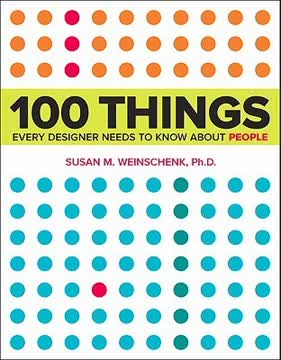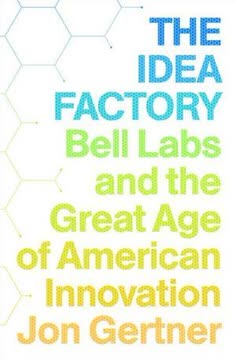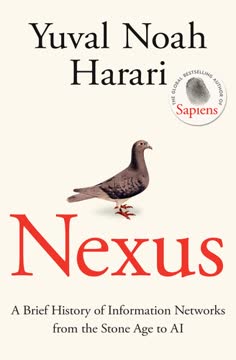Key Takeaways
1. The Cycle: Information Industries' Pattern of Openness and Control
History shows a typical progression of information technologies: from somebody's hobby to somebody's industry; from jury-rigged contraption to slick production marvel; from a freely accessible channel to one strictly controlled by a single corporation or cartel—from open to closed system.
The Cycle explained. This pattern, dubbed "the Cycle" by the author, is a recurring phenomenon in the history of information industries. It begins with a period of openness and innovation, often led by amateur enthusiasts and small-scale entrepreneurs. As the technology matures and its commercial potential becomes apparent, larger corporations move in, consolidating control and creating closed systems.
Examples throughout history:
- Telephone: from Bell's invention to AT&T's monopoly
- Radio: from amateur broadcasters to network dominance
- Film: from independent producers to studio system control
- Internet: from open academic project to increasing corporate influence
The Cycle demonstrates how industries transition from decentralized, innovative periods to centralized, controlled phases, often at the expense of creativity and consumer choice.
2. Disruptive Founders: Outsiders Who Challenge Established Systems
Inventors we remember are significant not so much as inventors, but as founders of "disruptive" industries, ones that shake up the technological status quo.
Characteristics of disruptive founders:
- Often outsiders to the established industry
- Possess a unique perspective on the problem at hand
- Willing to challenge conventional wisdom and take risks
Examples of disruptive founders:
- Alexander Graham Bell (telephone)
- Edwin Armstrong (FM radio)
- Steve Wozniak (personal computing)
These individuals not only invent new technologies but also create entirely new industries, often in the face of resistance from established players. Their success often depends on a combination of technical innovation and the ability to navigate complex business and regulatory environments.
3. The Power of Patents: Protecting Innovation and Fostering Monopolies
In the hands of an outside inventor, a patent serves as sort of corporate shield that can prevent a large industrial power from killing you off or seizing control of your company and the industry.
Dual nature of patents. Patents serve as both a protection for innovators and a tool for monopolistic control. They can:
- Safeguard small inventors from being overwhelmed by larger competitors
- Allow established companies to maintain dominance and stifle competition
Historical examples:
- Bell's telephone patent enabling the creation of AT&T
- Edison's film patents leading to the Motion Picture Patents Company (Edison Trust)
Patents play a crucial role in shaping information industries, often determining whether an industry remains open and competitive or becomes closed and monopolistic. The strategic use of patents can make the difference between a disruptive technology succeeding or being suppressed by established players.
4. Government's Role: Regulation, Deregulation, and Industry Shaping
The FCC and Congress saw fit to bless not the open system that had given birth to radio, but the closed system that was trying to throttle it.
Government influence on information industries:
- Regulatory decisions can determine industry structure
- Antitrust actions can break up monopolies or allow them to persist
- Policy choices often favor established players over newcomers
Key historical interventions:
- Creation of AT&T's regulated monopoly
- FCC's role in shaping radio and television broadcasting
- Breakup of AT&T in 1984
- Telecommunications Act of 1996
The government's role in information industries is complex and often contradictory. While sometimes acting to promote competition and innovation, it has also frequently supported the creation and maintenance of powerful monopolies. Understanding this dynamic is crucial for predicting and influencing the future of information industries.
5. Vertical Integration: The Double-Edged Sword of Media Empires
A strong stake in more than one layer of the industry leaves a firm in a position of inherent conflict of interest. You cannot serve two masters, and the objectives of creating information are often at odds with those of disseminating it.
Benefits of vertical integration:
- Economies of scale and scope
- Control over entire production and distribution chain
- Ability to cross-promote and leverage assets
Drawbacks of vertical integration:
- Stifling of innovation and competition
- Conflicts of interest between content creation and distribution
- Potential for censorship and control of information flow
Historical examples:
- Hollywood studio system's control of production, distribution, and exhibition
- AOL Time Warner merger and its ultimate failure
- Apple's integrated hardware, software, and content ecosystem
Vertical integration in media and information industries can lead to powerful, efficient corporations but also poses risks to innovation, competition, and free expression. The tension between these benefits and drawbacks continues to shape the information landscape.
6. The Internet: A Radical Departure or the Next Cycle Victim?
The Internet with its uniquely open design has led to a moment when all other information networks have converged upon it as the one "superhighway," to use the 1990s term.
The Internet's revolutionary aspects:
- Decentralized, open architecture
- Low barriers to entry for new services and content
- Global reach and interconnectedness
Challenges to the Internet's openness:
- Net neutrality debates
- Increasing consolidation of major tech companies
- Government surveillance and censorship efforts
The Internet represents a potentially radical break from previous information technologies, embodying principles of openness and decentralization. However, it faces increasing pressure from both corporate and governmental forces that could lead to a more closed, controlled system. The question remains whether the Internet will maintain its open character or succumb to the historical pattern of centralization and control.
7. The Separations Principle: A Framework for Information Freedom
What I propose is not a regulatory approach but rather a constitutional approach to the information economy. By that I mean a regime whose goal is to constrain and divide all power that derives from the control of information.
Key components of the Separations Principle:
- Separation of content creation from distribution
- Separation of information infrastructure from services
- Government's role as a check on private power, not an aid to it
Implementation strategies:
- Antitrust enforcement to prevent excessive vertical integration
- Common carrier rules for information infrastructure
- Fostering a culture of openness and information ethics
The Separations Principle offers a framework for maintaining openness and innovation in information industries. By preventing excessive concentration of power and maintaining clear boundaries between different layers of the information economy, this approach aims to preserve the benefits of both open and closed systems while mitigating their respective drawbacks.
Last updated:
FAQ
What's The Master Switch about?
- Exploration of Information Empires: The Master Switch by Tim Wu examines the rise and fall of information industries, focusing on how new technologies often start as open systems but eventually become monopolized.
- The Cycle Concept: Wu introduces "The Cycle," describing the typical progression of information technologies from open to closed systems, highlighting historical patterns in telephony, radio, film, and the Internet.
- Historical Context: The book provides a historical narrative, detailing key figures like Theodore Vail of AT&T and Adolph Zukor of Paramount Pictures, and their roles in shaping the information landscape.
Why should I read The Master Switch?
- Understanding Modern Media: Reading this book helps readers understand the dynamics of modern media and the implications of monopolistic control over information.
- Lessons from History: Wu draws parallels between past information empires and current technologies, offering insights into how history may repeat itself with the Internet.
- Critical Thinking: The book encourages critical thinking about the future of information technologies and the importance of maintaining open systems for innovation and free expression.
What are the key takeaways of The Master Switch?
- Open to Closed Transition: Every major information technology has transitioned from an open, innovative phase to a closed, monopolistic one, often stifling creativity and diversity.
- Role of Monopolies: Wu argues that monopolies, while sometimes efficient, can lead to a lack of innovation and reduced public discourse, as seen with AT&T and Hollywood studios.
- Importance of Regulation: The author discusses the role of government regulation in shaping industries, suggesting that without oversight, monopolies can flourish at the expense of public interest.
What is "The Cycle" as defined in The Master Switch?
- Definition of The Cycle: Wu defines "The Cycle" as the historical pattern where new information technologies start as open systems, encouraging innovation, but eventually become monopolized and closed off.
- Historical Examples: The Cycle is illustrated through various technologies, including telephony, radio, and film, each of which began with open access but ended up dominated by a few powerful entities.
- Implications for the Internet: Wu warns that the Internet, despite its current openness, may also be subject to The Cycle, leading to potential monopolistic control in the future.
How does The Master Switch relate to the Internet?
- Current Context: Wu discusses the Internet as the latest information technology that began with open access and innovation but faces threats of monopolization from large corporations.
- Historical Parallels: The book draws parallels between the early days of the Internet and previous technologies, suggesting that the same patterns of control and closure may emerge.
- Call for Vigilance: Wu emphasizes the need for vigilance and advocacy for open systems to prevent the Internet from following the same path as earlier information empires.
What role does government play in the information industries according to The Master Switch?
- Regulatory Influence: Wu discusses how government regulation can either support or hinder the development of information industries, often favoring established monopolies over new entrants.
- Historical Examples: The book provides examples of how government actions, such as the Kingsbury Commitment with AT&T and the breakup of Hollywood studios, shaped the landscape of information industries.
- Need for Balance: Wu argues for a balanced approach to regulation that encourages competition and innovation while preventing monopolistic practices.
What is the Separations Principle mentioned in Master Switch?
- Definition of the Principle: The Separations Principle advocates for keeping different layers of the information economy—content creation, distribution, and access—distinct from one another.
- Historical Context: Wu argues that historical monopolies, like AT&T, demonstrate the dangers of vertical integration in information industries.
- Implementation: The principle suggests that regulatory bodies like the FCC should enforce rules that prevent monopolistic practices, ensuring a more equitable information landscape.
How does Tim Wu define the concept of net neutrality in Master Switch?
- Core Definition: Net neutrality is the principle that Internet service providers must treat all data on the Internet equally, without discriminating or charging differently by user, content, website, platform, or application.
- Historical Context: Wu connects net neutrality to the historical struggles for open communication channels, emphasizing its importance in preventing monopolistic control over information.
- Implications for the Future: The book warns that without net neutrality, the Internet could become a closed system dominated by a few powerful entities.
What are the best quotes from The Master Switch and what do they mean?
- “At stake is not the First Amendment or the right of free speech, but exclusive custody of the master switch.”: This quote underscores the central theme of the book, highlighting the importance of who controls information and communication technologies.
- “History shows a typical progression of information technologies: from somebody’s hobby to somebody’s industry.”: This reflects Wu's argument about the inevitable transition from open innovation to monopolistic control.
- “The brave new technologies of the twentieth century… eventually evolved into privately controlled industrial behemoths.”: This quote encapsulates the book's warning about the dangers of monopolization and the loss of public access to information.
How does The Master Switch address the concept of free speech?
- Connection to Information Control: Wu posits that free speech is closely tied to who controls information technologies, suggesting that monopolies can limit the diversity of voices and ideas.
- Censorship Mechanisms: The book explores how centralized control over media can lead to censorship, whether through formal regulations or informal pressures from powerful entities.
- Advocacy for Openness: Wu advocates for maintaining open systems in information industries to ensure a vibrant marketplace of ideas and protect free speech.
What are the historical examples used in Master Switch?
- AT&T and the Telephone Monopoly: Wu details the rise and fall of AT&T, illustrating how it became a monopoly and the subsequent breakup in the 1980s.
- The Film Industry: The book discusses the emergence of Hollywood and the establishment of the studio system, highlighting how vertical integration stifled competition and creativity.
- Cable Television: Wu explores the deregulation of cable television in the 1970s and 1980s, showing how it transformed the media landscape.
How does The Master Switch conclude regarding the future of information industries?
- Cyclical Nature: Wu concludes that the cyclical nature of information industries suggests that without intervention, monopolies will continue to emerge and stifle innovation.
- Call to Action: The author calls for active engagement from consumers, policymakers, and innovators to advocate for open systems and resist the encroachment of monopolistic control.
- Hope for Change: Despite the challenges, Wu expresses hope that history can inform future actions, allowing society to navigate the complexities of information technology and maintain a diverse and open media landscape.
Review Summary
The Master Switch receives mostly positive reviews for its insightful analysis of information empires throughout history. Readers appreciate Wu's exploration of monopolies in telecommunications, radio, television, and the internet. The book's historical detail and examination of regulatory issues are praised. Some criticize Wu's bias towards Google and find the "Cycle" concept strained. Many consider it a must-read for understanding the evolution of information technologies and their impact on society, though a few find it overly US-centric or outdated in parts.
Similar Books






Download PDF
Download EPUB
.epub digital book format is ideal for reading ebooks on phones, tablets, and e-readers.





